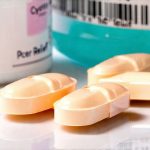Urological issues are surprisingly common, affecting both men and women across all age groups. Often shrouded in discomfort and even embarrassment, these conditions range from minor inconveniences like occasional urgency to more serious problems requiring professional medical attention. Many individuals initially turn to over-the-counter (OTC) remedies hoping for quick relief or a simple solution. This is understandable; OTC options are readily available, generally affordable, and offer the appeal of self-management without immediate doctor visits. However, determining whether these remedies truly work requires careful consideration, an understanding of the underlying issues, and realistic expectations about what OTC treatments can – and cannot – achieve.
The vast landscape of urological health encompasses a wide spectrum of concerns, including urinary tract infections (UTIs), benign prostatic hyperplasia (BPH) in men, interstitial cystitis/bladder pain syndrome (IC/BPS), overactive bladder (OAB), kidney stones, and various forms of incontinence. The effectiveness of OTC remedies is highly dependent on the specific condition being addressed. A remedy effective for mild urgency might be entirely useless against a severe UTI or BPH-related obstruction. Furthermore, self-treating without proper diagnosis can sometimes delay appropriate medical care and potentially worsen underlying conditions. It’s crucial to remember that OTC solutions often manage symptoms rather than addressing the root cause of the problem.
Understanding Over-the-Counter Options
The OTC market offers a diverse range of products marketed for urological health. These generally fall into several categories: supplements, pain relievers, bladder control aids, and urinary tract symptom relief medications. Supplements like saw palmetto are frequently promoted for BPH symptoms, while cranberry extracts are often used to prevent UTIs. Pain relievers such as ibuprofen or acetaminophen can help manage discomfort associated with kidney stones or IC/BPS flare-ups. Bladder control pads and underwear provide a practical solution for managing incontinence, and medications containing anticholinergics (at lower strengths than prescription versions) attempt to reduce bladder spasms in OAB. It’s vital to understand that the level of scientific evidence supporting these remedies varies considerably.
Many OTC products rely on traditional use or anecdotal evidence rather than rigorous clinical trials. For example, while cranberry juice has been a long-standing remedy for UTIs, recent research suggests its effectiveness is limited and primarily benefits individuals who experience frequent UTIs. Similarly, saw palmetto’s impact on BPH remains controversial, with studies yielding mixed results. This doesn’t necessarily mean these remedies are ineffective for everyone, but it highlights the importance of approaching them with a critical eye and managing expectations accordingly. Consumers should always look for products that have undergone third-party testing to ensure quality and purity.
It’s also important to be aware of potential interactions between OTC remedies and other medications, or existing health conditions. For instance, certain herbal supplements can interfere with blood thinners or affect kidney function. Always consult a pharmacist or healthcare professional if you are taking any prescription medications or have underlying medical issues before starting any new supplement or OTC treatment. Self-diagnosis and self-treatment can be risky, so it’s better to err on the side of caution and seek expert advice when in doubt.
Navigating Specific Urological Concerns with OTC Remedies
Let’s examine how OTC options might apply to some common urological issues:
Urinary Tract Infections (UTIs)
UTIs are frequently caused by bacterial infections, primarily affecting women. While prescription antibiotics remain the gold standard treatment for UTIs, several OTC strategies can help manage symptoms and potentially prevent recurrence.
– Drinking plenty of water is crucial for flushing out bacteria.
– Cranberry products (juice, capsules) have been traditionally used, but as mentioned previously, their effectiveness is debated. Some studies show they may prevent E. coli from adhering to the bladder wall, reducing infection risk in some individuals.
– Pain relievers like phenazopyridine can provide temporary relief from burning and urgency associated with UTIs, but they only mask symptoms and do not treat the underlying infection. Phenazopyridine should never be used as a substitute for antibiotics.
– D-mannose is a naturally occurring sugar that some studies suggest may help prevent recurrent UTIs by binding to E. coli bacteria.
However, if you suspect a UTI (burning sensation during urination, frequent urge to urinate, cloudy urine), it’s essential to see a doctor for diagnosis and appropriate treatment with antibiotics. Untreated UTIs can lead to kidney infections, which are much more serious.
Benign Prostatic Hyperplasia (BPH)
BPH is the enlargement of the prostate gland, common in aging men. It can cause urinary symptoms like frequent urination, difficulty starting or stopping urination, and a weak urine stream.
– Saw palmetto has been extensively marketed for BPH relief, but its efficacy remains controversial. Some studies suggest it may modestly improve urinary flow rates, while others show no significant benefit.
– Pumpkin seed oil is another supplement sometimes used for BPH symptoms, with limited scientific evidence to support its use.
– Lifestyle modifications like reducing fluid intake before bedtime and avoiding caffeine can help manage OAB symptoms associated with BPH.
It’s crucial to remember that BPH can have serious underlying causes, including prostate cancer. Regular checkups with a urologist are essential for proper diagnosis and monitoring of BPH, regardless of whether OTC remedies are used.
Overactive Bladder (OAB)
OAB is characterized by a sudden, uncontrollable urge to urinate, often leading to involuntary urine leakage (urge incontinence).
– Bladder training exercises can help increase bladder capacity and reduce urgency. This involves gradually increasing the intervals between urination.
– Pelvic floor exercises (Kegels) strengthen the muscles that support the bladder and urethra, improving urinary control.
– Limiting fluid intake before bedtime and avoiding caffeine/alcohol can also help manage OAB symptoms.
– Some OTC medications contain low doses of anticholinergics to reduce bladder spasms but are generally less effective than prescription options.
If OAB significantly impacts your quality of life, it’s important to see a doctor to rule out other underlying conditions and discuss more effective treatment options. Incontinence can have various causes, and proper diagnosis is essential for targeted therapy.
It’s clear that OTC remedies can play a role in managing some urological symptoms, offering temporary relief or potentially preventing recurrence in certain cases. However, they are not a substitute for professional medical evaluation and treatment. The key lies in understanding the limitations of these remedies, using them appropriately, and seeking expert advice when necessary. Prioritizing proactive healthcare and addressing underlying issues remains paramount for maintaining optimal urological health.





















